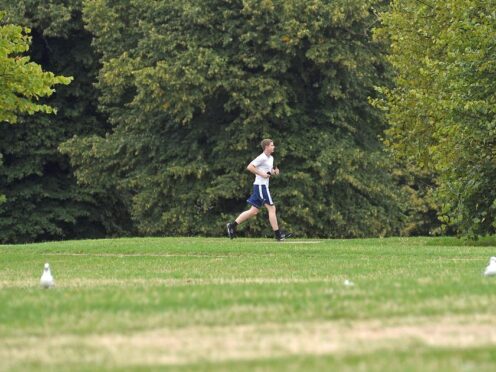
People who live in “leafy” areas may be less likely to develop a condition which causes bones to become weak and more prone to breaks, according to a new study.
Osteoporosis weakens bones, which makes them fragile and more likely to fracture.
Now a new study has found that living in greener areas is associated with higher bone density and a decreased risk of developing osteoporosis.
Researchers said that lower air pollution in green neighbourhoods could be a contributory factor.
But they point out that osteoporosis is a “complex disease” which is caused by both genetic and environmental factors.
The research, published in the journal Annals of the Rheumatic Diseases, examined data on almost 400,000 people taking part in the UK Biobank study.
As part of the long-term study, researchers have collected data on people’s “greenness exposure” which is measured by a commonly used tool, called a normalised difference vegetation index, which uses satellite imagery to determine the amount of green space in their residential area.
Did you know that not consuming enough calcium increases your risk of developing osteoporosis? Check your risk today and start your bone health journey now:Find out how to get more calcium in your diet on our website: https://t.co/nSpJgV1KvV#osteoporosis pic.twitter.com/TE5aXkpNJk
— Royal Osteoporosis Society (@RoyalOsteoSoc) February 6, 2024
The Biobank study also provides data on a number of health outcomes including whether or not people have or develop certain illnesses – such as osteoporosis – and their bone mineral density (BMD) estimates.
Researchers also took into account the genetic risk scores of people involved in the study.
People in the study had an average age of 56 and they were followed up for an average of 12 years.
During the follow-up period some 9,307 people were diagnosed with osteoporosis.
If you have osteoporosis it's usually recommended you take a vitamin D supplement all year round, but its important for everyone to do so during winter. Read more here: https://t.co/ojqCtbdH5V#osteoporosis #vitaminD pic.twitter.com/WIEFhuWyyS
— Royal Osteoporosis Society (@RoyalOsteoSoc) February 27, 2024
Statistical analysis revealed that people in greener neighbourhoods had “increased bone strength” and were less likely to develop osteoporosis during the follow-up period.
“Our study employed a large nationwide prospective cohort study to examine the association between residential greenness and bone health,” the researchers from Central South University in Changsha, China, wrote.
“The findings from this study present the first evidence indicating that residential greenness is associated with higher BMD and a decreased risk of developing osteoporosis.”
They said that the association between greenness and osteoporosis was found to be “partially mediated by air pollution”.
Previous studies have shown that exposure to air pollution can disrupt bones through vitamin D deficiency, hormone disruption, inflammation and “oxidative stress”, they added.
The team also point out that people who live in greener neighbourhoods have more opportunities to exercise, which could also play a role in reducing a person’s risk of developing osteoporosis.
The authors said that the impacts of greenness on osteoporosis also appeared to be more evident in individuals with low genetic risk.
Commenting on the study, Sarah Leyland, clinical advisor at the Royal Osteoporosis Society (ROS), said: “The ROS welcomes research such as this that explores the potential relationship between our environment and risks of osteoporosis and fractures – problems set to increase dramatically with our ageing population.
“Sadly, this study doesn’t provide any conclusive evidence that green spaces improve bone health.
“But access to open spaces to keep active and exercise will certainly help ensure we build and keep strong bones throughout our lives.”

Enjoy the convenience of having The Sunday Post delivered as a digital ePaper straight to your smartphone, tablet or computer.
Subscribe for only £5.49 a month and enjoy all the benefits of the printed paper as a digital replica.
Subscribe